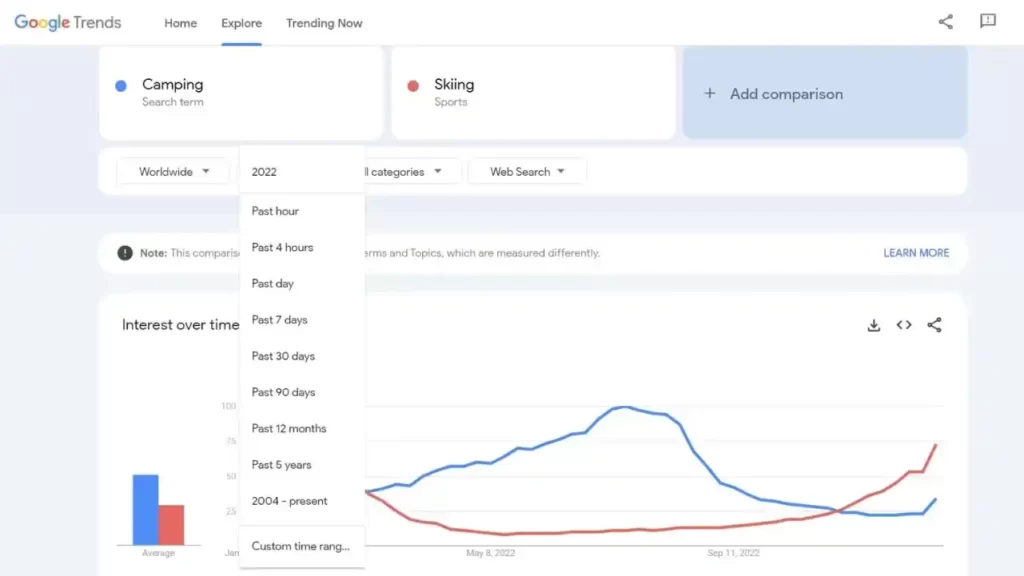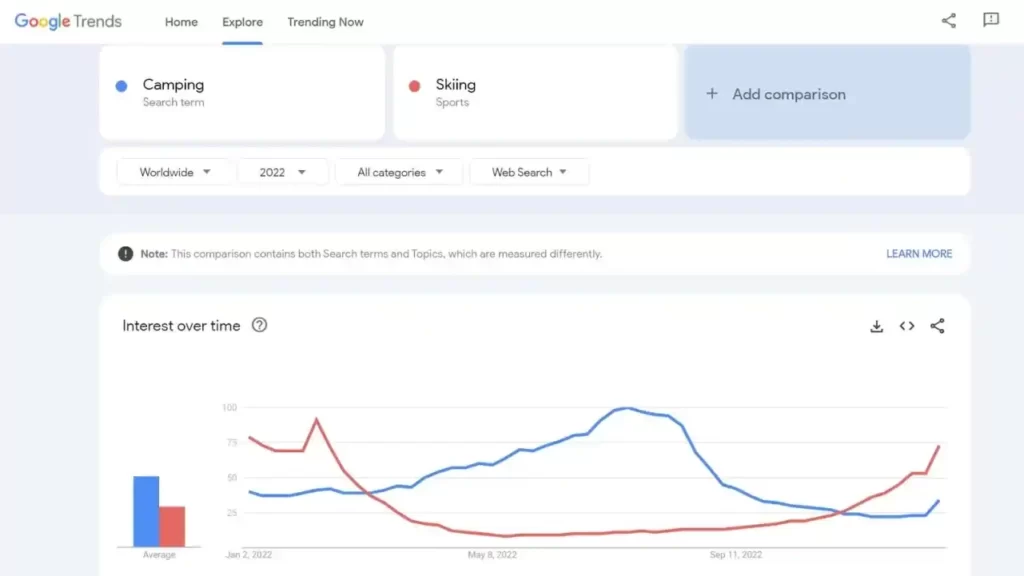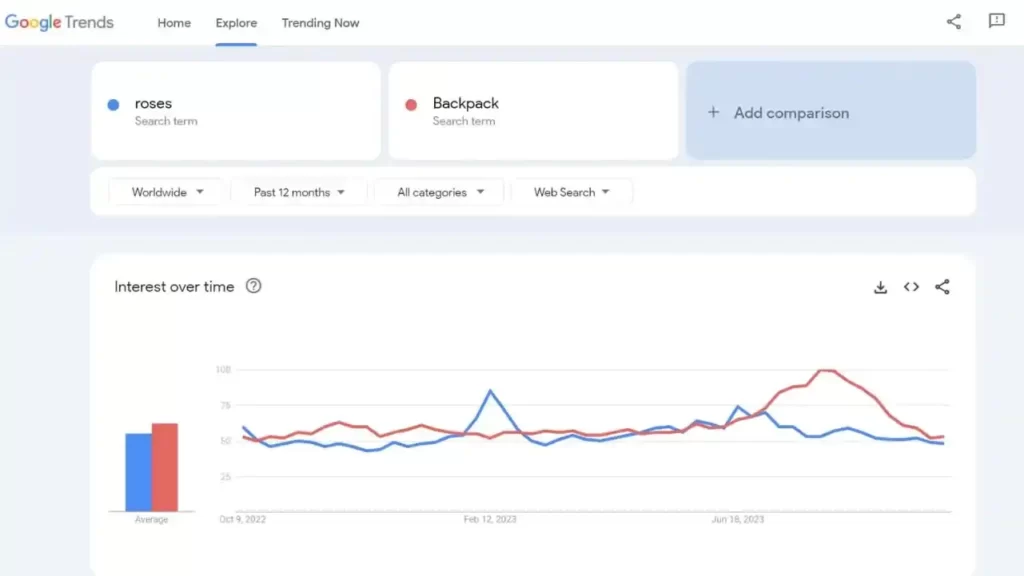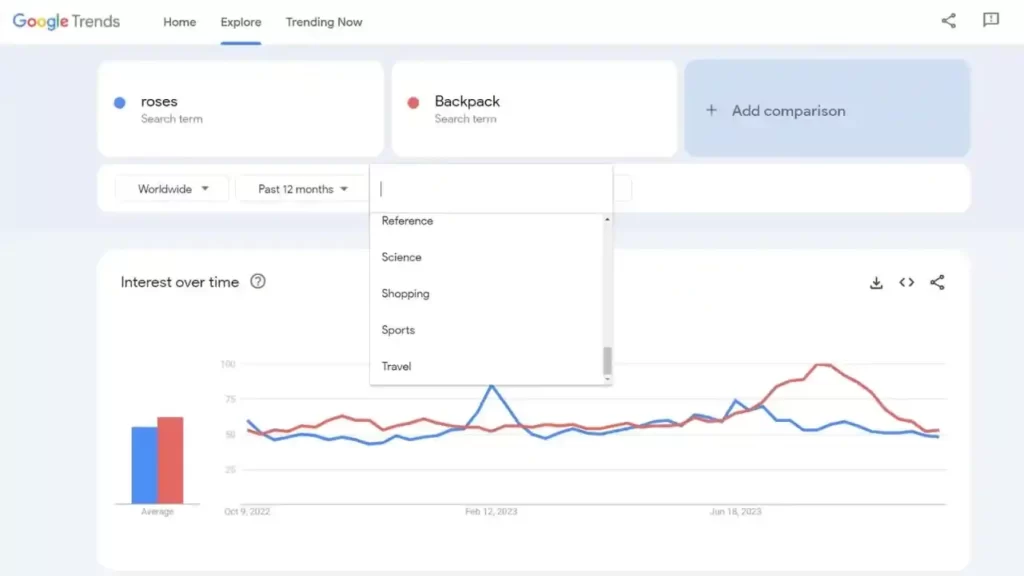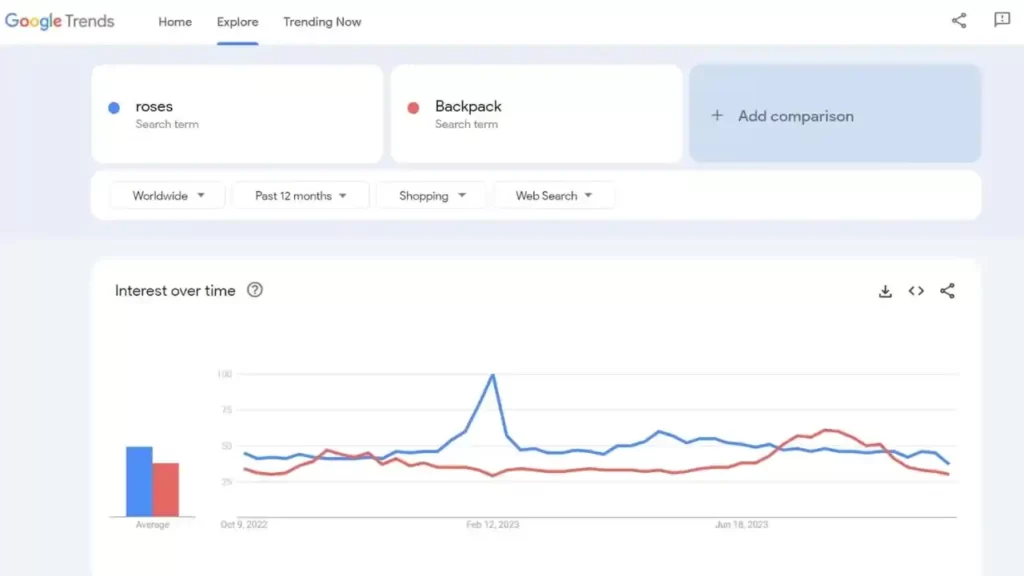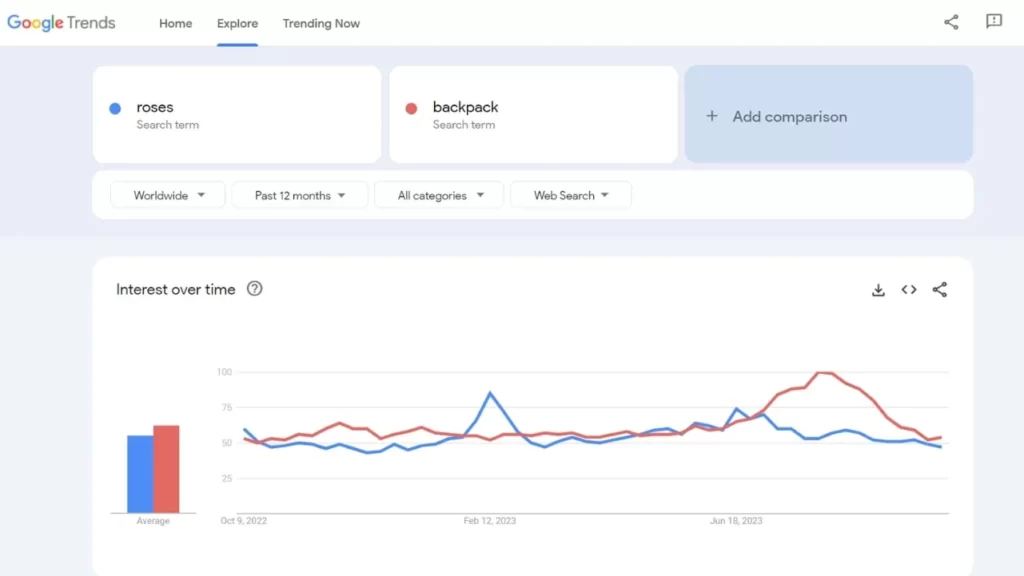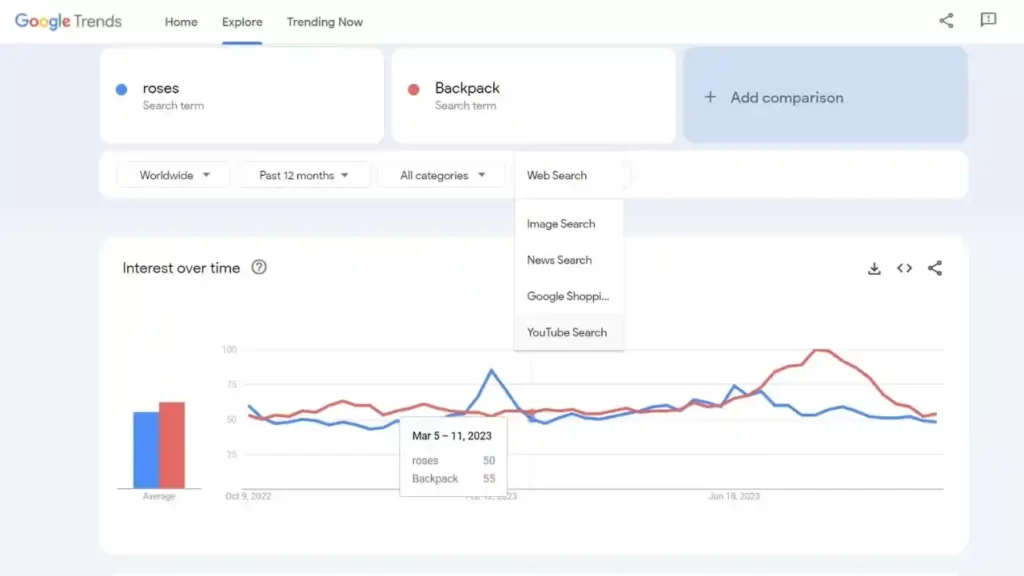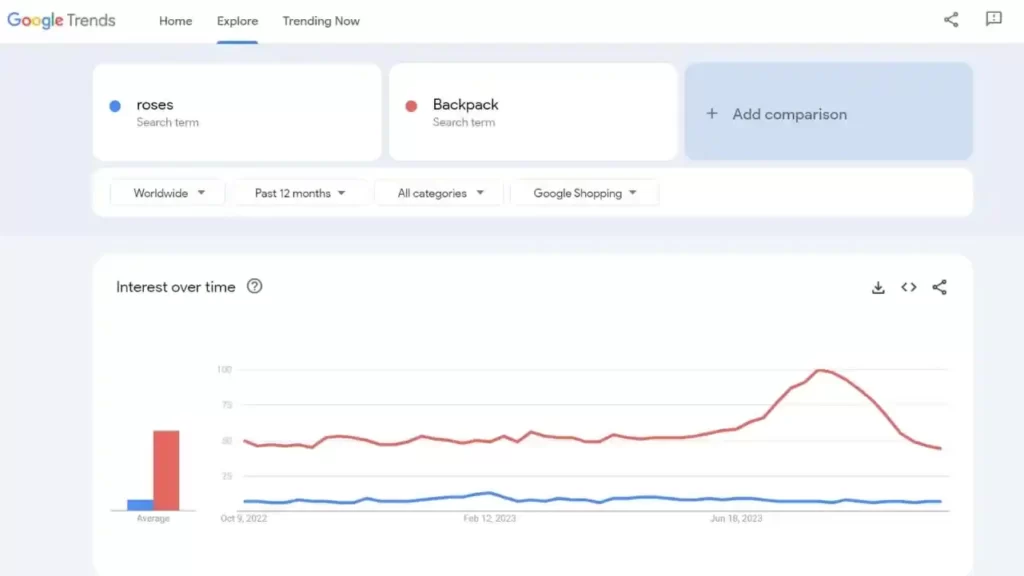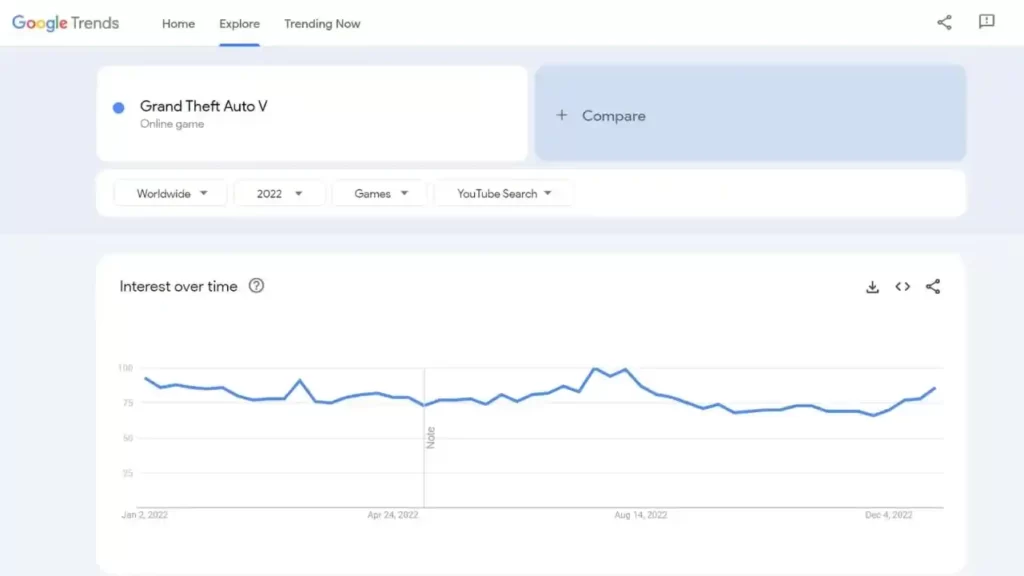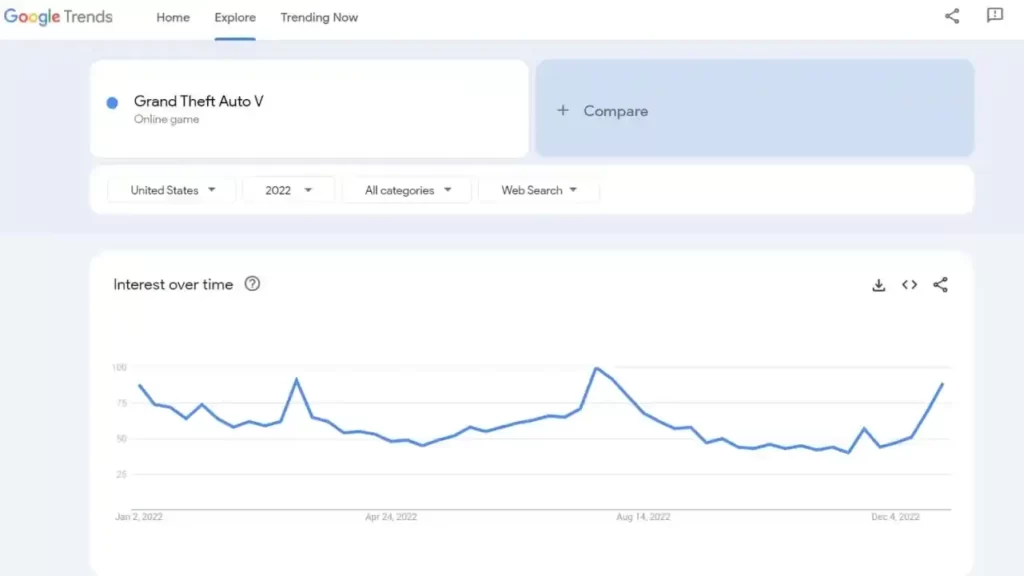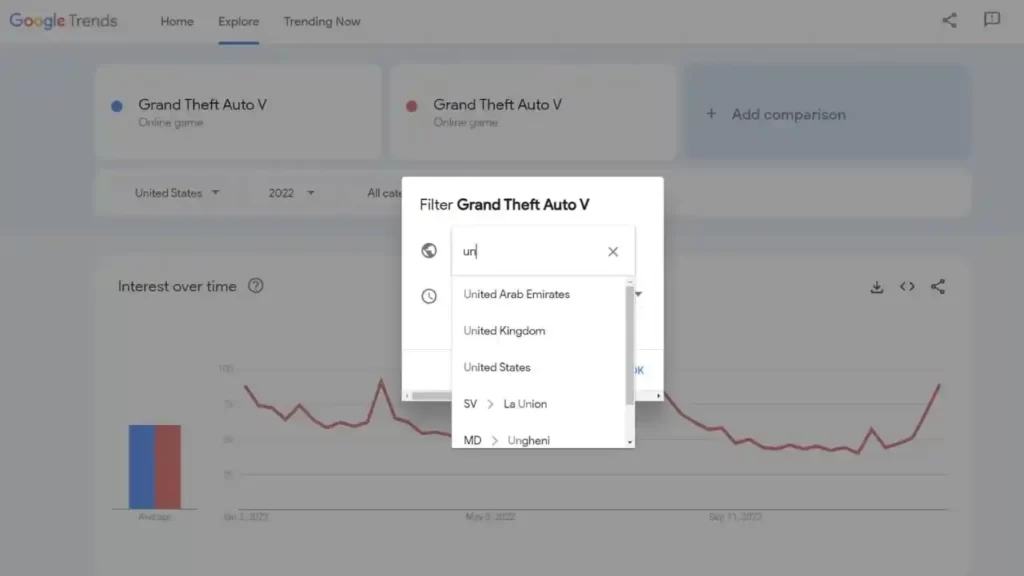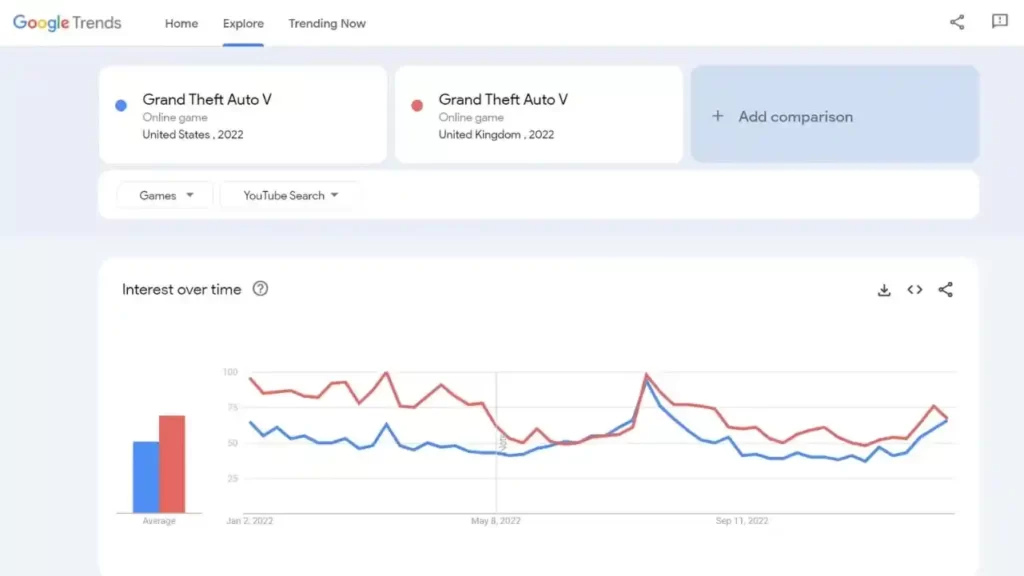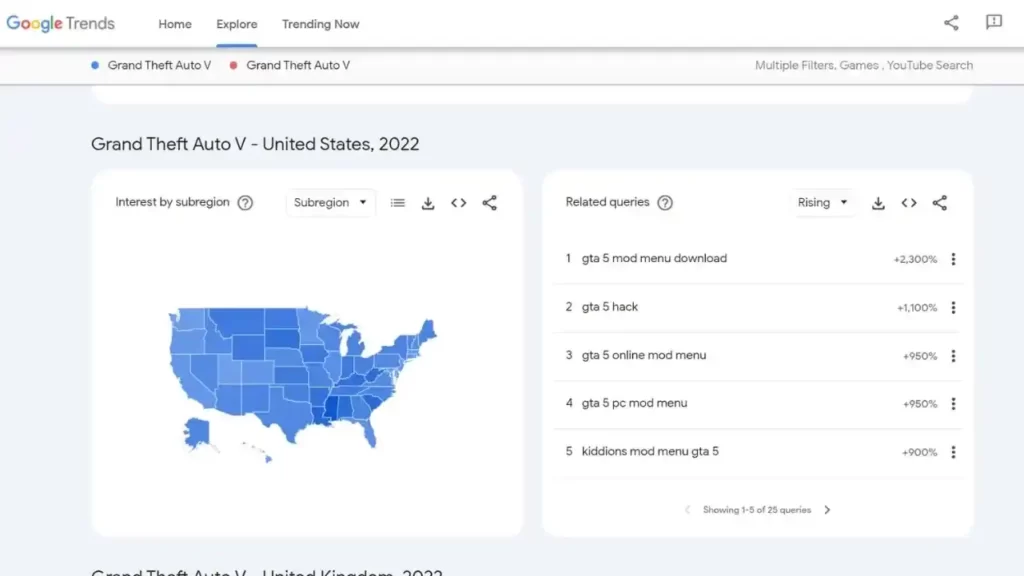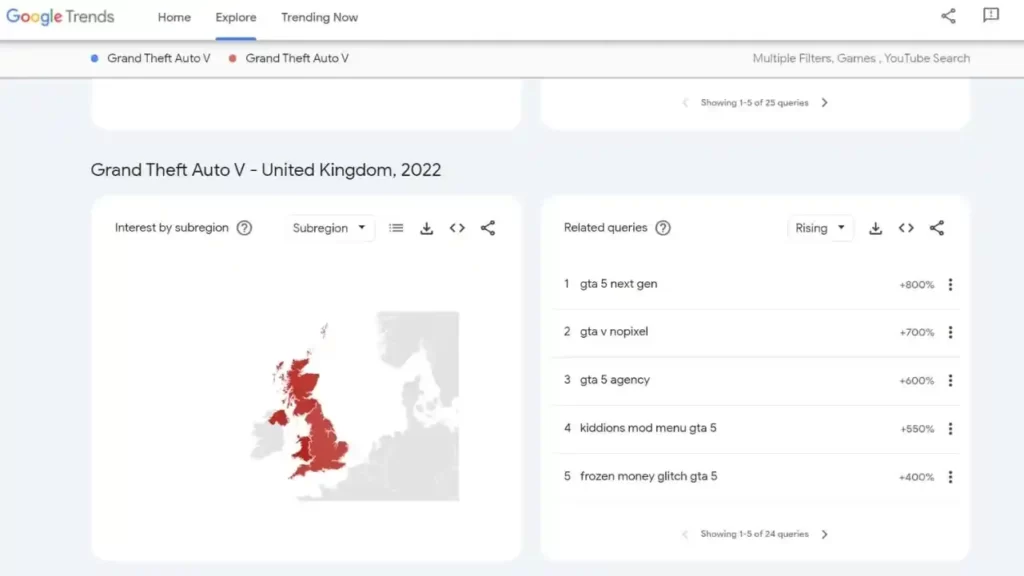Advanced Google Trends: Google Trends is an indispensable asset in online marketing because it allows you to track the popularity of any topic or keyword over time, as well as access additional data such as related searches and keywords, search location/time frame settings, and the ability to filter results by category/industry.
Google employs an algorithm to keep tabs on the popularity of a particular search term or subject; this means that the results it displays may have peaks and troughs that have little to do with genuine user interest. Searches for “daylight savings time,” for example, show up as surges in Google Trends in March and October/November each year, even though nobody searches for this keyword that often; Google changes their statistics to seasonal demands.
We have already discussed the Basics of Google Trends in the previous post.
Table of Contents
Finding the Most Searched Topic in Every Region Or Country in Google Trends
Finding where your ideal customers are located geographically will allow you to understand your target audience and adjust your e-commerce strategy accordingly. If you sell shoes or handbags, knowing where people are looking online will help you sell more to a specific demographic, decrease competition, and maximize profits.
When comparing the volume of a keyword to the total searches made over its time and geographic location, Google Trends varies from Keyword Planner by displaying relative search interest statistics. In addition, it refines this data by removing special characters like apostrophes and avoiding repeated queries.
To use Google Trends, type a keyword or phrase into the top search box and select the time frame you’d want to examine (hour, 4 hours, day, week, month, 90 days, 5 years, or 2004-present). Look out for periods of high and low search activity by clicking “compare” to see how the popularity of various phrases has varied over time. Valleys suggest less interest, whereas peaks represent times when people are actively searching for something.
The homepage of Google Trends also features a section highlighting current events or social media buzz-driven trends, which might present a chance for newsjacking or capitalizing on viral events to boost attention and sales for your company. Many of these fads stay short-lived, but if you can identify one related to your product or service, you may use newsjacking to boost your brand’s visibility and possibly even produce some sales.
Advanced Search With Punctuation in Google Trends
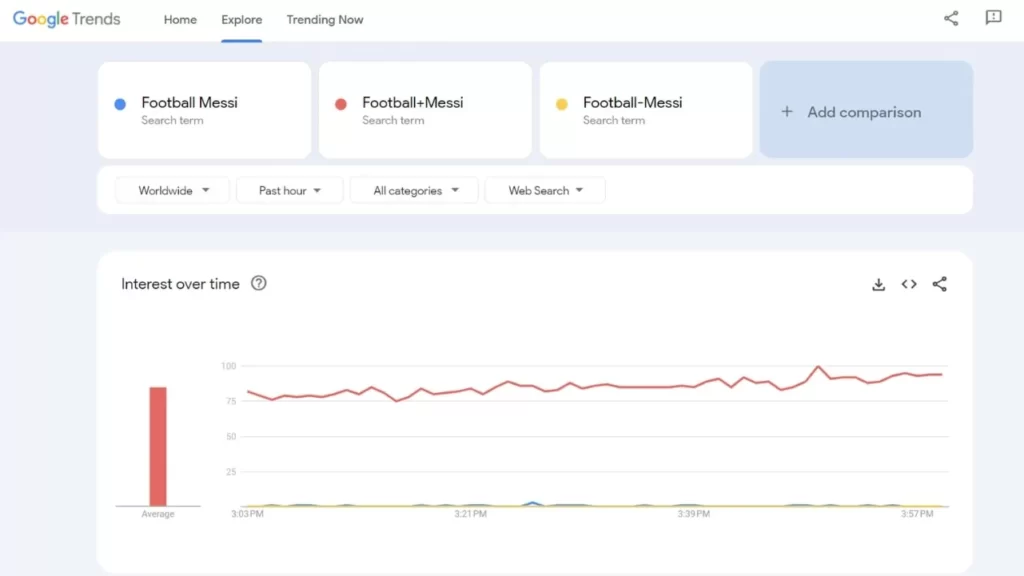
You may use Google Trends to see how often people have searched for a particular keyword on Google over time and any related subjects or questions they may have used.
You may learn more about how Google users conduct searches using the advanced search with punctuation function. Filtering away common typos that crop up while searching online and only displaying results that contain searches for your particular phrase provides for more precise analysis. If you’re looking for keywords with low demand, it also helps you keep tabs on how their popularity changes over time.
If you type “Football + Messi” into a search engine, you may get either “Football” or “Messi” in the results. If you type in “Football – Messi,” you will get results that contain Football but not Messi.
Customizable Time Range and Location in Google Trends
Analyzing search data has never been easier than with Google Trends and its flexible time range and location options. Users may observe regional or temporal patterns in search activity by selecting a location and time frame and then filtering the results by category (Web, Image, News, Google Shopping, or YouTube).
For e.g., Knowing that the most interest in “wedding invites” in the United States is between January 1 and February 14 will help you schedule content and allocate resources more efficiently.
This function shows how people’s queries have changed over time and what other queries were popular at the same time. The inverted trend line shows that “camping” is more prevalent in the summer than skiing is, which might assist your business in recognizing seasonal patterns.
There is also a clear visualization of the top locations worldwide regarding search volume for every particular query. With this information, advertisers can more precisely target local audiences with sponsored advertising and provide content more likely to elicit clicks and, ultimately, purchases.
You can use Google Trends to compare up to five different search keywords or rivals, making it a helpful tool for finding new trends, learning about seasonal patterns, benchmarking against competitors and spotting threats and opportunities. For instance, if one of your rivals is expanding at a higher rate than you are, you should investigate their advertising strategies immediately to see why.
Keeping tabs on search activity also sheds light on when your target market’s interests shift, giving you a heads-up on when to update product pages and other promotional materials. For instance, if interest in a specific product you offer gradually wanes, you may stop stocking it, discontinue sales, or both.
It is also possible to narrow the time frame under consideration. You can manually enter dates into the text boxes or choose them from a calendar. This is the way to go if you need detailed information for a limited time.
Furthermore, the search volume in that area will appear when you hover over a region. You may either click on a region to reveal the subregions nestled inside it, or you can input the name of a subregion into the “country” tab up top. Consider the popularity of flowers as a search term in Chicago, for instance.
Use Categories to Consider Search Context in Google Trends
Search trends alone do not give an accurate representation. They should be evaluated in conjunction with other data sets. Still, Google Trends is a valuable tool to gain insight into what people are searching for and whether this relates to your product or service.
The Query Category function in Google Trends is helpful since it allows you to narrow your search results based on specific phrases. If you’re trying to optimize landing pages for marathon events, use words like “half marathon training program 10 weeks” as a seed keyword for an educational blog post or group them with similar terms to make a subject cluster.
In contrast to search phrases that consistently create interest throughout the year, those that spike in popularity around a certain event or holiday may be more suggestive of a fad, making attracting new customers more demanding. This distinction is vital to remember since fleeting trends may need to be more fruitful to attract new customers as more stable concepts.
Searches for “roses” tend to spike around Valentine’s Day, and “backpacks” tend to see a significant uptick in interest over the summer, with August often seeing the highest amount of searches. Searches for “epilepsy” during the 2020 pandemic were substantially more significant than they are today; therefore, this service helps spot disruptions of these cyclical tendencies.
Being aware of regional differences in search behavior is just as crucial. Input any search phrase into Google’s homepage, and Google Trends will immediately provide relevant statistics. Search volume for a given phrase might vary widely from one city or state to another. For example, people in Texas and Washington, DC, are more likely to look for information on epilepsy symptoms online than those in other parts of the country.
Choose the subheading that best describes the situation you’re researching. The outcomes will be reflective of contextual searches for the phrase or topic. Once you’ve decided on a wide category, you may remove your search word or subject and look at the data in that context alone. You may think of these groups as overarching themes. They are significantly more general than the search terms we often employ to delve into Google Trends. When we combine these themes, we get to the meat of the matter.
With such insights, you can refine the focus of your marketing efforts and steer clear of terms that look promising but don’t convert.
Additional Context With Search Type in Google Trends
Consider search context while conducting keyword research for SEO efforts. You need to know the relative popularity of your keywords, if there are seasonal swings, and what other characteristics customers believe are significant, for example, if you’re investigating keyword trends to incorporate into your content strategy.
To help you better understand the search context, Google Trends offers a variety of query refining choices. Image, video, and specialized Shopping results from Google are all examples. Compared to traditional online search data, which shows your interest over time and by area, these new sources reveal far more about the trending topics.
Google Trends allows you to choose from five search options: standard web, YouTube, picture, Google News, and Google Shopping searches. These are separate, non-overlapping data sets.
Percentage growth of a specific topic is another helpful query refining option. By comparing a search term’s growth to its peak rather than the average of all searches during a particular period, you get a more accurate sense of its popularity as it spreads.
A “Web Search” button is located just above the line graph, to the right of the category drop-down menu. When you click this, a list of available search options will appear. Let’s use “YouTube Search” as our case in point. Below, you’ll see some suggestions based on your query. In what ways have things shifted between traditional online search and search on YouTube?
This may be especially useful for deducing the impact of current events on search behavior; for instance, for example when searches for the phrase “who” spiked following Taylor Swift’s performance on The Tonight Show and a subsequent rise in interest in the band Red Devils.]
Here we have continued our rose vs backback example.
Detailed Comparison With Filters in Google Trends
In-Depth Comparison Using Google Trends In addition to validating marketing plans, discovering new possibilities, and gaining insights into the competition, With Filters provides marketers with many additional methods to leverage its renowned search query data product. Extending a search phrase across several months or years will reveal how many searches this issue has made during its history, while comparing comparable inquiries will demonstrate how much higher interest there may be in one over the other, which may help you determine whether an event is actual or simply a one-off fad-like.
Google collects and normalizes search query data, allowing users to filter for location, period, search type, and category to provide a more targeted analysis of trends. Remember you cannot compare worldwide data to any country.
Here we have compare “GTA V” data Web Search data between USA and UK.
Tailoring content to mobile users’ needs may be worthwhile if users do a disproportionate number of searches on that platform. Input a topic and use the mouse to explore it. A menu option will pop up for you to select from. Select “change filters” from the menu’s available selections.
When analyzing search phrase trends with Google Trends, remember to only compare apples to apples (or two countries or weeks). Google Trends can become a priceless asset for marketers if used correctly.
Google Trends is a great place to start if you’re a company owner or marketer looking for more insight into consumer behavior than you can get from basic Google datasets like census demographic data or AdWords search traffic data.
You may easily find new search trends important to your business using the Detailed Comparison with Filters function on Google Trends. This feature lets you compare the search popularity of up to five phrases over time in a bespoke chart, filtering by subject and area.

